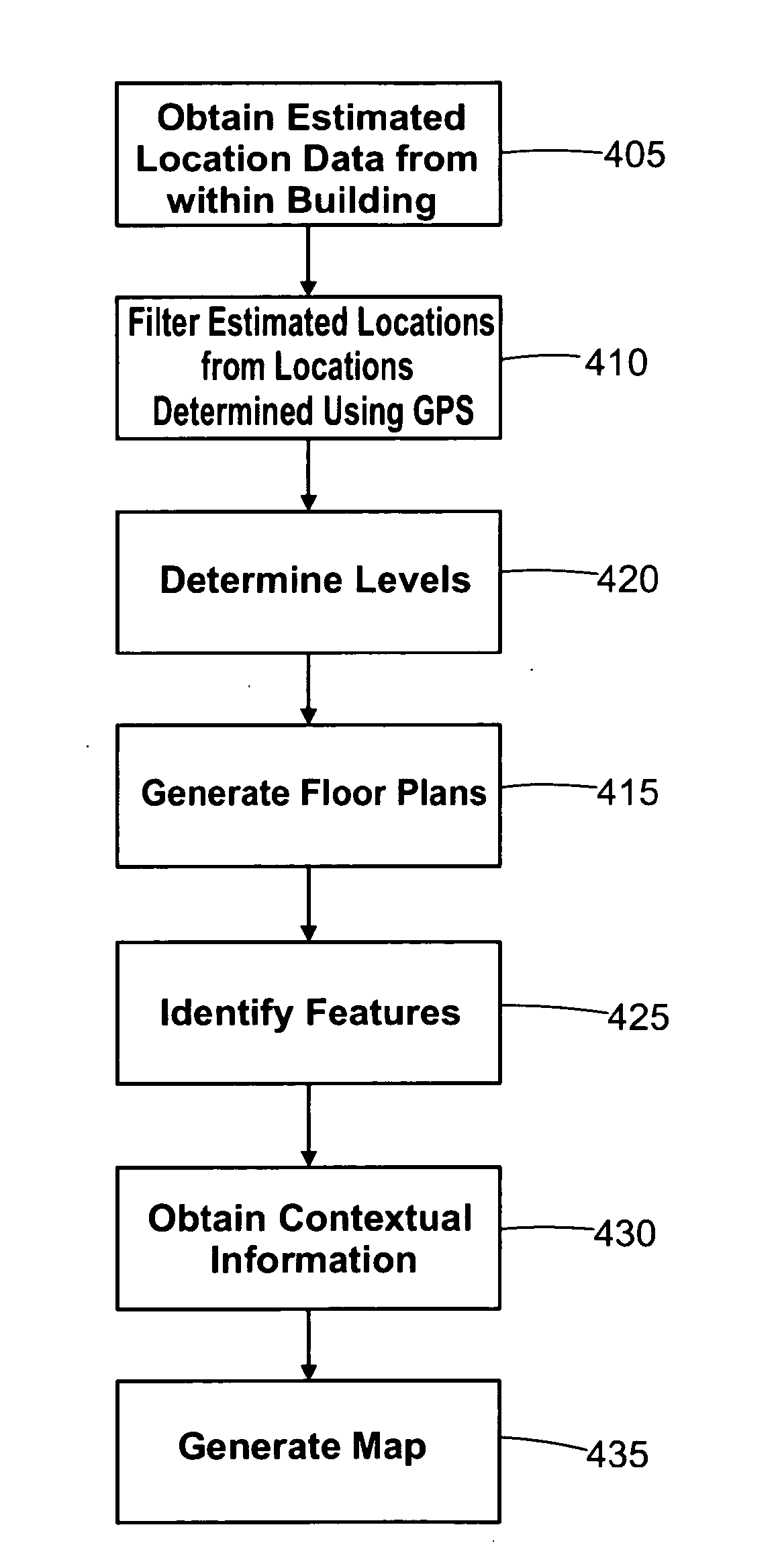Method for generating map data
a map and data technology, applied in surveying, navigation, instruments, etc., can solve the problems of insufficient gps signal reception in buildings, inability to determine internal features or layouts, and inability to obtain satellite or aerial views. the effect of reducing the bandwidth required
- Summary
- Abstract
- Description
- Claims
- Application Information
AI Technical Summary
Benefits of technology
Problems solved by technology
Method used
Image
Examples
Embodiment Construction
[0057]Throughout the following description identical reference numerals will be used to identify like parts.
[0058]As indicated above, many traditional techniques used in the collection of mapping data such as those relying solely on GPS based systems may be ineffective inside buildings and enclosed spaces.
[0059]FIG. 2 shows a mobile device 200 that comprises non-GPS sensors 205, 210, 215, 220 that are operable to obtain navigational data and / or at least partial estimates of location. For example, the mobile device 200 may be equipped or equipable with one or more sensors such as pedometers 205, compasses 210, pressure sensors 215 such as barometers, gyroscopes 220, inclinometers and the like. The mobile device 200 is also equipped or equipable with a GPS sensor 225 for use when sufficient signal 108 from GPS satellites 102 is available. The GPS 225 and / or non-GPS 205, 210, 215, 220 sensors may optionally be built into the mobile device 200 or may be connected to the mobile device 20...
PUM
 Login to View More
Login to View More Abstract
Description
Claims
Application Information
 Login to View More
Login to View More - R&D
- Intellectual Property
- Life Sciences
- Materials
- Tech Scout
- Unparalleled Data Quality
- Higher Quality Content
- 60% Fewer Hallucinations
Browse by: Latest US Patents, China's latest patents, Technical Efficacy Thesaurus, Application Domain, Technology Topic, Popular Technical Reports.
© 2025 PatSnap. All rights reserved.Legal|Privacy policy|Modern Slavery Act Transparency Statement|Sitemap|About US| Contact US: help@patsnap.com



